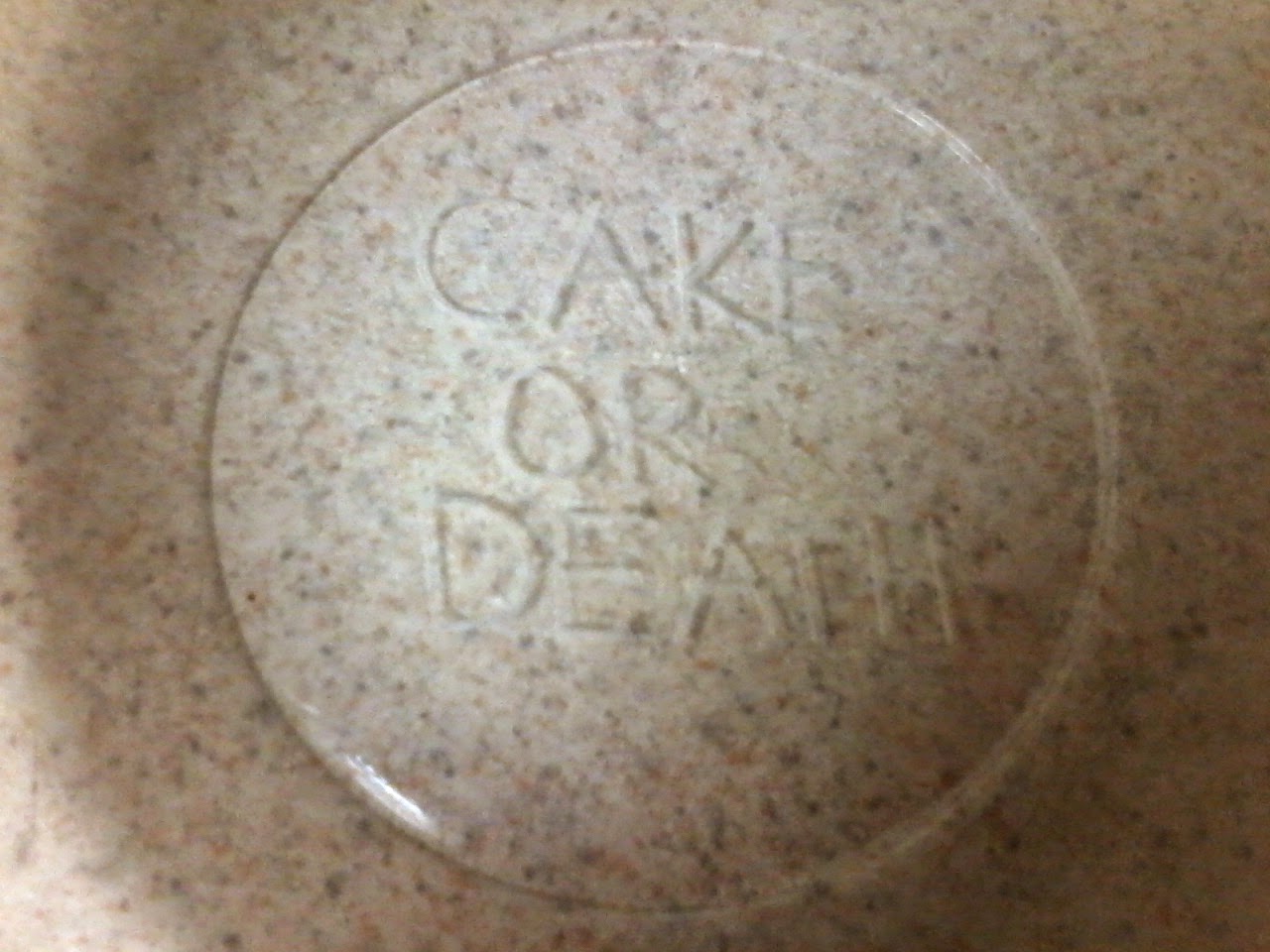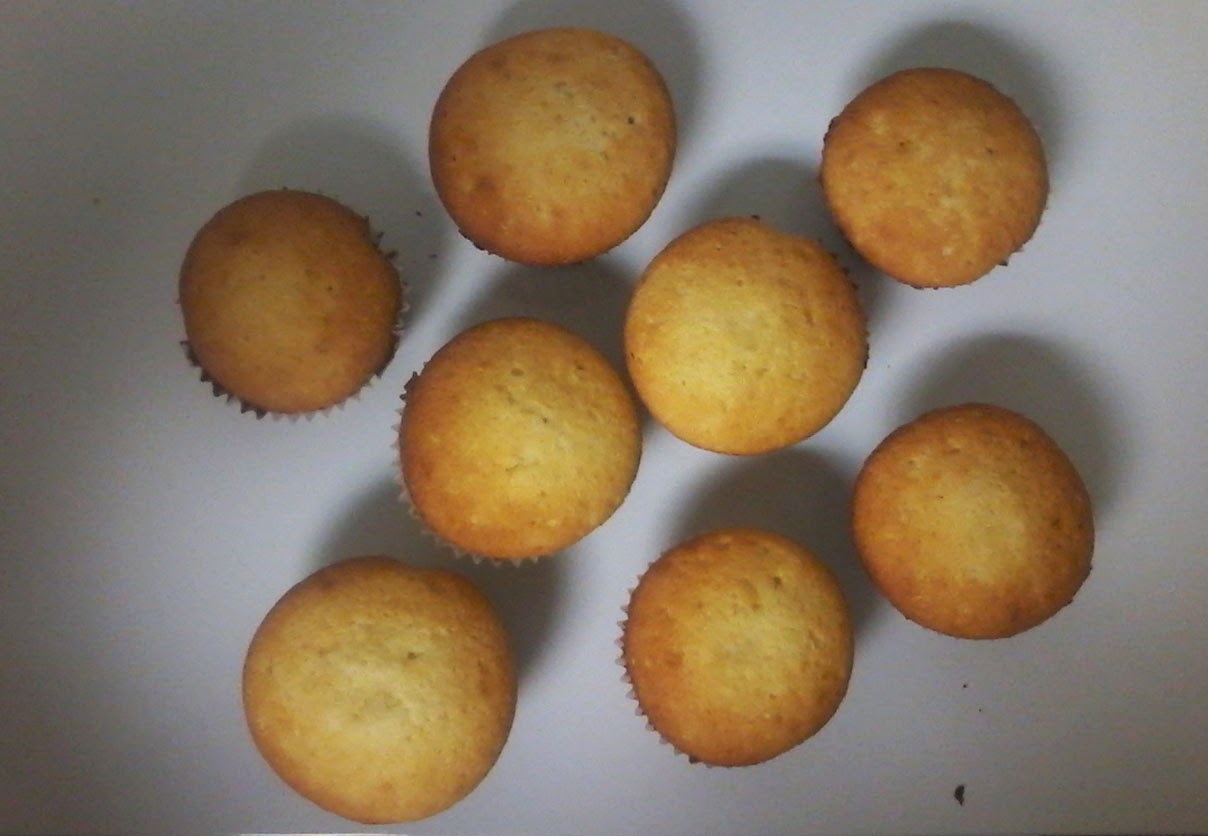Today is the...
 |
| Click the picture to read all about it! |
We at A Book of Cookrye used this as an excuse to have a lot of friends over and eat this:
 |
| "Would you like to come over for cheesecake and tea?" |
If you haven't seen the cookbook, it's a collection of recipes from in and around the 1960s. The nice thing about it being a modern collection of old recipes (rather than a book from when said recipes were new) is all the scary awful things like molded olive and mayonnaise salads have been removed! What's left, you ask? An unusually long chapter of drinks, and this!
 |
| The Unofficial Mad Men Cookbook, 2011 |
Cherry Topping
About 1 lb frozen cherries
¼ c sugar
⅓ c water
3 tbsp cornstarch or 4 tbsp rice flour
Juice of 1 lemon (optional)
Stir together the cornstarch, sugar, and water until the starch is dissolved. Put over high heat until it starts to boil. Reduce heat and simmer 10 minutes. Squeeze in the lemon juice, if desired, when you take it off the stove (it'll boil away if you put it in earlier). |
I've actually been to Lindy's in New York. A friend and I took a day trip there and we decided to go there for, appropriately enough, cheesecake. We entered a surprisingly empty restaurant (it was late afternoon on a weekend) restaurant and got shown to a table. Someone set plates, silverware in napkin burritos, and menus in front of us. We looked at the prices and very quickly made for the door.
 |
| So the making of the cheesecake begins... |
Anyway, the note leading up to the recipe said Lindy's was famous for its cookie dough crust. I very nearly could tell you if they still are, but they didn't have them in a glass cabinet for us to see as we we ran for it. Or maybe they did, but the waitstaff seemed very angry to see us flee. Honestly, given that it's rigged up to be a tourist trap these days, I don't know why they were so mad to see us go. We can't be the first to do so. Famous for cookie dough crust or not, there wasn't going to be much crust to be famous for.
After we decided to spare an hour of waiting followed by another fifteen minutes holding a rolling pin and swearing, patting half of the dough into the pan left us with a very thin bottom crust that came out
very well-done.
We briefly considered trying to press it onto the sides before deciding that no one gives extra points for that. Besides, we really miss making Play-Doh sausages.
 |
| It's kinda like a cookie dough wreath (which gives me a great edible centerpiece idea). |
This next step involved reaching into a burning hot saucepan while trying not to burn our wrists.
While there were some grated rinds in the cookie dough, the cheese shredder we borrowed got considerably more involved in the actual cheesecake.
Does anyone else see the pile of lemon and orange rinds and think of the rhyme from
1984? You know,
"Oranges and lemons,
The bells of St Clement's,
The government's spying on me"?
Never mind. Let's get to the cream cheese!
The
last time we made a cheesecake, it had not four cream cheese bricks. This one has
five.
We had no mixing bowl up to the task and ended up making it in the big
casserole we got because it looked smaller in the store. We'd have mixed
it in the saucepan as we have many times before, but it was already lined with tinfoil and ready to
be experience life as a springform pan.
 |
| Kinda looks like a cream cheese tuxedo, doesn't it? |
You may not understand how many bricks of cream cheese are involved in a Lindy's cheesecake.
 |
| We had to wait for these to go on sale. |
Please think about this:
the cream cheese overflowed the casserole.
Now, to fully understand just how much cream cheese is going into this, please contemplate how many wrappers got left behind.
The cream cheese overwhelmed my mixer and nearly drowned the beaters.
 |
| Those little hand mixers can only do so much. |
We shortly realized that we'd have to do it with a wooden spoon and attempting this with the mixer would only result in a burnt out motor and having to do this with a wooden spoon anyway. Then the cream cheese swallowed an egg.
Speaking of, I'm not sure why I'm supposed to add two egg yolks on top of five(!) eggs, but here they are. For those keeping track, we had to crack open 8 eggs for this.
However, we had a neat surprise when we added the cream and vanilla- the vanilla shot across the cream kind of like those
milk, food coloring, and soap experiments.
I've previously mentioned how much cream cheese went into this thing, but to fully grasp this, please look at how full my saucepan (
which can hold whole chickens) is.
Meanwhile, we had decided there was no point in making a cheesecake from scratch and putting canned pie filling on it. So, we cadged some frozen cherries from Marcus.
Did you know that rice flour seems to thicken things about as well as cornstarch? I didn't, but since I had no cornstarch but had rice flour leftover from a foray into the world of gluten free, I was very glad to find out. The resulting cherry filling looked like boiling entrails and sounded like the mudpots in Yellowstone (or at least, the way said mudpots sounded in
The Wonderful World of Disney).
 |
| Blup blup blup... |
I must admit I chickened out of the 200° baking temperature. Averaged out with the 400° starting temp, it might result in something that's only just set and ever so delicate. But I didn't want to risk serving glop to a whole bunch of people driving quite a ways see me. I've foisted enough deliberately scary recipes on my friends and this was meant to make things up to them. Therefore, I baked it at 300° instead.
The nice thing about baking cheesecakes in a pot is that you have a lid to put on when you leave this in the refrigerator. However, as we found out, if a cheesecake is the
slightest bit warm when you cover it, it will get rained on in the night.
Fortunately, cheesecakes are more forgiving than anything else of getting wet.
 |
| Seriously, you'd never know we had a problem. |
Looks kind of like a cheesecake Jiffy-Pop, doesn't it?
We then realized that we had invited people over and therefore had to actually come up with dinnerware. When your domicile is half a bedroom, you do not tend to keep a large supply of tableware. However, we came up with five place settings.
 |
| Five "cups" |
Yes, two people would eat off pot lids and another person off a pizza
pan. Also, one person got to drink out of a small pot and another out
of a bowl. However, it's five place settings! It'd have been perfect had
I not had seven people coming over. Fortunately, there were two pairs
dating. Each single person at table got their own plate cup, and
cutlery, and those who brought a plus one got to be all sappy and share
with them.
Given how many "do you work on Thursday night?" and
"All right, T and Mike have Friday and Saturday, what about you?" phone
calls were made over the three weeks leading up to this night, I really
missed how easy it was to get everyone together when we were in high
school. Back then it was just "Want to do something this weekend?". And
maybe, if we were planning something big like someone's birthday party, we'd tell people a week or so ahead about it.
Now we all have to see when we have off from work, no class, or
anything else planned. I guess a sign we're all falling into adulthood--
that we just don't see each other as often as we wish we could. I think
it's best summed up in a text I sent someone a few years ago: "Remember
when life was simple and all you needed on speed dial was two Chinese
delivery places and a bike shop?"
 |
| Five plates- well, plate-objects- with a piece of cutlery for each! |
The recipe may have said this serves 12-16, but we sliced the cheesecake 8 ways. The crust on this thing was
sturdy and defied all attempts to cut through it. We ended up lifting the cake up and breaking it off once we'd sliced through the filling. People may have been breaking bread since the time of Jesus, but that's because they never tried breaking cheesecake.
 |
| Pictured: A single person's plate. You know it's a single person because there's only one slice. |
We passed the cherries around with a spoon instead of pouring it on top before cutting the cake.
This left you
full after a piece. Like, I barely remembered it was suppertime hours later. As a final sign of how good this was, those in my building who ate was left after serving everyone who came over were telling me
nine days later how good it was.





















.JPG)


































